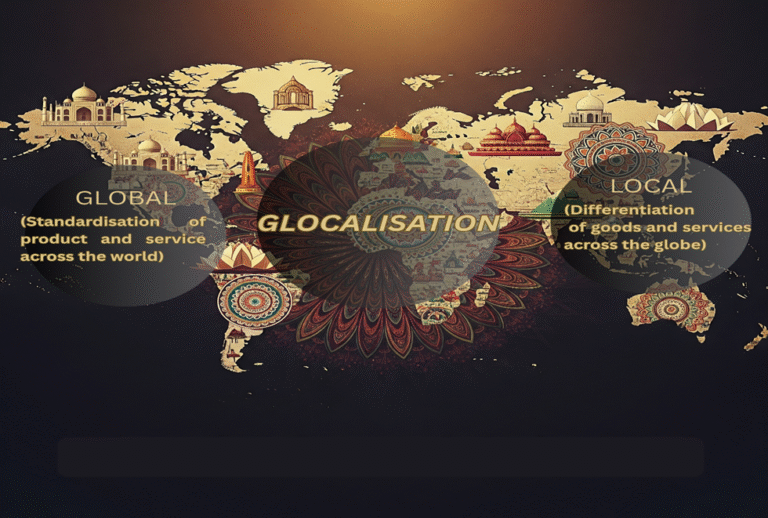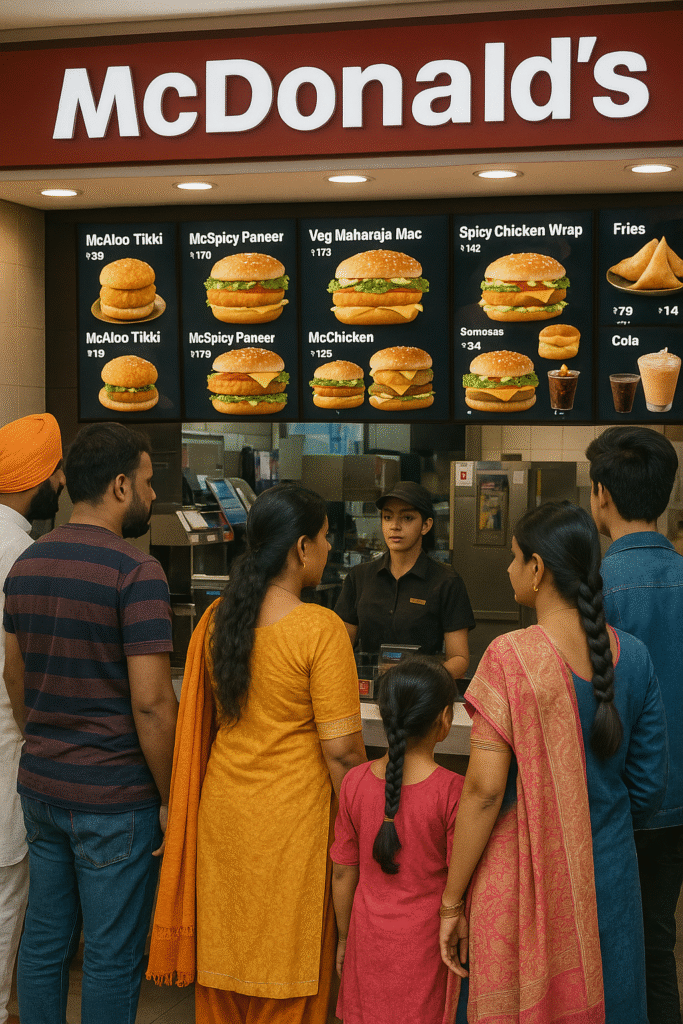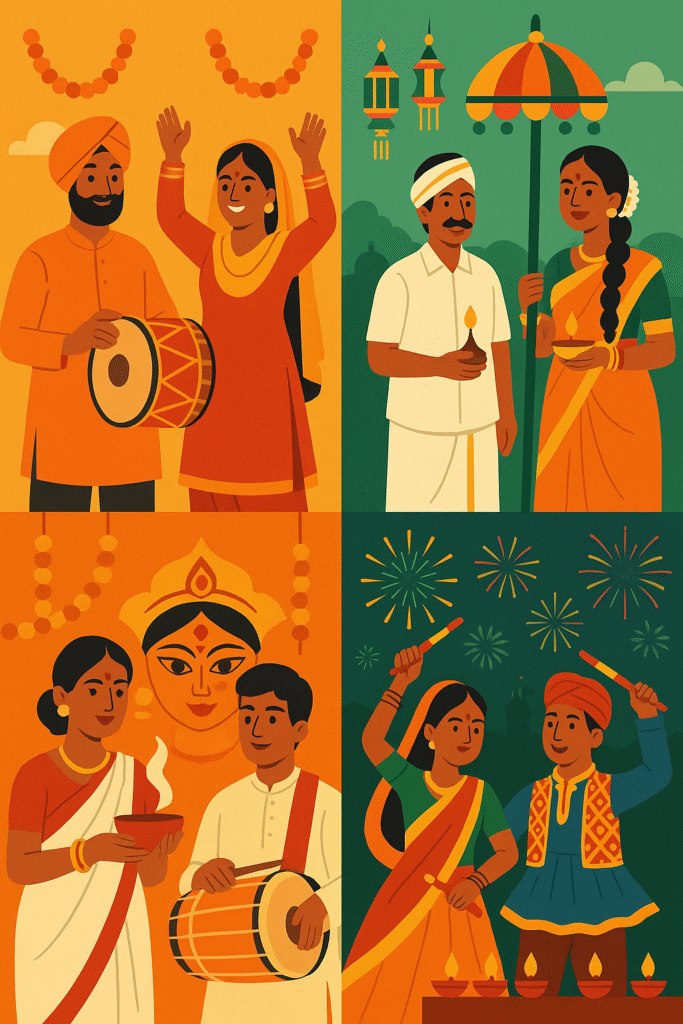
Introduction: Glocalisation In India
In this digital era, where trends are changing every minute, it is quite challenging to stay relevant in the long run, so brands need to have an emotional connection to their target consumer to sustain themselves in the market, for which companies need to know their consumer well, like their common beliefs. According to a World Bank report, India’s GDP will increase by 25%, and its exports can rise up to USD 2 trillion by 2030.
It has surpassed China as the world’s most populated country, with average monthly consumption of Rs. 4,122–Rs. 6,996, according to a survey conducted by the Ministry of Statistics & Programme. Thus, India is coming out as a promising country for global brands, offering a variety of business opportunities, so companies want should align their business offerings with the local environment to penetrate the Indian market.
Importance
- India is profound for its strong cultural beliefs, and people are very emotionally connected to their cultural roots. So, showing a resemblance to their beliefs as part of branding will build trust among consumers, and they will feel attached to a brand as the company is respecting their culture.
- Due to income disparity in India, companies need to understand purchasing patterns among different income classes. As brands cannot set standard prices or offer products as in Western countries, what is considered a necessity by many Western consumers may not hold the same significance in India.
- As brands cannot set standard prices or offer products as in Western countries, what is considered a necessity by many Western consumers may not hold the same significance in India.
- India is a bit difficult when it comes to promoting products; we cannot highlight one region’s dominance, or in rural and urban areas there will be different marketing strategies that will be followed.
Successful Case Study of Globalisation
When it comes to glocalisation in india, there is one name that stands out in everyone’s mind, i.e., McDonald’s Corporation.
McDonald’s Corporation Success Story in India

The strategy that helps McDonald’s Corporation achieve success is “Think Global, Act Local”. Their adaptation and execution strategies are custom-made according to Indian preferences. They customised their entire menu to Indian taste buds and, secondly, focused on price affordability: their lowest-priced item starts at only 50 rupees. Therefore, their strategy completely fits this word, “glocalisation”, which means adapting to the local environment while maintaining global standards.
Key challenges
- Cultural Diversity: India has diverse cultures and ethnicities, which demand localised branding, pricing models, and marketing, which will increase the total cost, so culture integration is quite challenging.

Price Sensitivity: As there is a huge income gap among different classes of people and there are huge operational costs due to the wide diversity in India, it is quite difficult to build a pricing model that fits all target consumers.
- Digital Engagement: India is the most populated country. There are all types of people in India having different beliefs and habits, so using social media to connect with them is quite difficult
Conclusion
Recently, it has been found that 67% of people trust influencers over traditional ads, as mentioned in the Kantar Report, and 68% of people are consuming content in their native language, according to an IAMAI and Nielsen study, so global brands need to keep pace with changing trends to succeed in the Indian market.
FAQs
1. What is glocalisation?
Glocalisation is a business strategy that combines global standardization with local customization. It means creating products or services that respect the cultural, economic, and social nuances of the local market while maintaining a brand’s global identity.
2. How is glocalisation different from globalisation?
Globalisation focuses on offering standardized products worldwide, while glocalisation involves adapting those products to local cultures. In India, for example, companies often modify offerings to align with religious beliefs, dietary habits, and local preferences.
3. Why is glocalisation important for businesses entering India?
Glocalisation in India is crucial due to the country’s cultural diversity, linguistic variety, and income disparity. Adapting global business strategies to local needs helps brands connect emotionally with Indian consumers and increases their market acceptance.
4. Can you give an example of glocalisation in India?
McDonald’s is a classic example of glocalisation in India. They removed beef and pork from their menu, introduced vegetarian options like the McAloo Tikki burger, and priced items affordably to cater to Indian tastes and sensibilities.
5. How does Indian culture influence glocalisation strategies?
Indian culture, with its strong traditions, festivals, and family values, plays a big role in shaping brand messaging and product offerings. Brands that integrate local customs, symbols, and language into their campaigns tend to succeed better.
6. What are the main challenges of glocalisation in India?
Some key challenges include understanding regional diversity, dealing with varying income levels, adjusting to local infrastructure, and handling language barriers. Each region may require a different marketing approach, making the process resource-intensive.
7. Is glocalisation in India limited to food brands only?
No, glocalisation in India is applied across industries like fashion, electronics, FMCG, and even fintech. For example, Amazon tailors its app interface for rural users, and Netflix offers regional content to attract a wider audience.
8. How do pricing strategies change with glocalisation in India?
Pricing must reflect the economic realities of different consumer segments. For instance, low-income groups in India demand value-for-money products, which leads global brands to offer smaller pack sizes or budget-friendly alternatives.
9. What role does language play in glocalisation?
Language is vital. India has 22 official languages, and people prefer content in their native tongues. Brands practicing glocalisation in India use regional languages in ads, packaging, and customer service to create stronger engagement.
10. What is the “Think Global, Act Local” principle?
This principle underpins glocalisation. It encourages companies to maintain their global vision while customizing operations and offerings to suit local needs. This strategy works well in India due to its cultural complexity and evolving market.
11. Are Indian consumers open to global brands?
Yes, but with a catch. Indian consumers welcome global brands that understand and respect their values. Brands that adapt to local preferences without appearing culturally tone-deaf usually gain more trust and loyalty.
12. How do festivals affect glocalisation in India?
Festivals are a huge part of Indian life, and brands align campaigns around them to connect emotionally. For example, Diwali, Holi, and Eid campaigns often feature localized themes, special product editions, and culturally resonant advertisements.
13. What’s the impact of influencer marketing on glocalisation?
Influencers bridge the gap between global brands and local consumers. Collaborating with regional influencers helps brands implement glocalisation in India more effectively by building trust and targeting niche audiences.
14. Is localisation the same as glocalisation?
Not exactly. Localisation focuses solely on adapting to local needs, while glocalisation strikes a balance between global consistency and local relevance. In India, companies often mix both to maintain brand identity while appealing to diverse groups.
15. How do global fashion brands practice glocalisation in India?
Fashion brands introduce Indian-inspired collections, collaborate with local designers, and adjust sizing to Indian body types. H&M, for instance, has launched ethnic fusion lines and regional promotions in Indian metros.
16. What mistakes do brands make while attempting glocalisation in India?
Common mistakes include superficial localization, ignoring religious or cultural sensitivities, or applying a one-size-fits-all approach to such a diverse country. Poor execution can lead to backlash or market rejection.
17. How does digital content play a role in glocalisation in India?
Digital content helps brands connect with tech-savvy Indian users. Using regional memes, native language captions, and localized video content on platforms like YouTube or Instagram amplifies glocalisation in India.
18. Can startups also use glocalisation strategies?
Absolutely. Even startups benefit from glocalisation in India by understanding niche audiences, targeting underserved regions, and building region-specific solutions. Edtech, fintech, and healthtech startups especially use local languages and cultural framing.
19. How has the rise of Tier-2 and Tier-3 cities influenced glocalisation?
These cities have become major consumer bases. Glocalisation in India has expanded beyond metros to these areas through vernacular marketing, local influencer tie-ups, and affordable products tailored to non-urban needs.
20. What’s the future of glocalisation in India?
The future looks bright. With India’s growing economy, digital penetration, and cultural pride, brands that embrace glocalisation in India will likely outperform those that don’t. Success will depend on empathy, cultural insight, and flexibility.
References
“The Significance Of Glocalization In Consumer Behavior” : fastercapital
“The Importance of Indianization for Global Brands“ : lexiphoria
Global Brands That Nailed Localization in Different Markets : languageintelligence
Conference.unib.ac.id article
jcrm.psgim.ac.in article
Penned by Manshika
Edited by Sneha Seth, Research Analyst
For any feedback mail us at [email protected]
Transform Your Brand's Engagement with India's Youth
Drive massive brand engagement with 10 million+ college students across 3,000+ premier institutions, both online and offline. EvePaper is India’s leading youth marketing consultancy, connecting brands with the next generation of consumers through innovative, engagement-driven campaigns. Know More.
Mail us at [email protected]